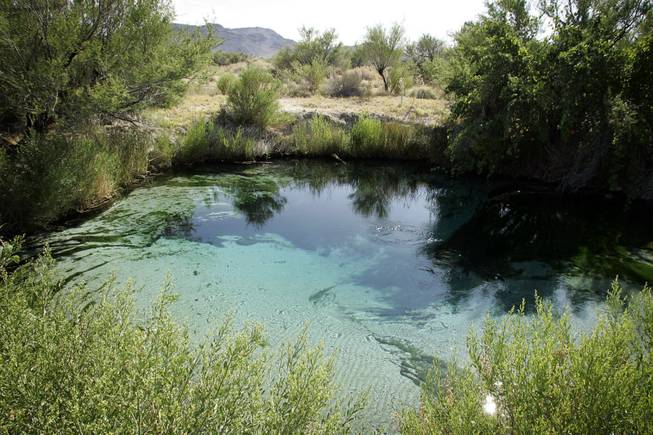
Crystal Spring, in Ash Meadows National Wildlife Refuge near Amargosa Valley in Nye County, is one of many bodies of water that are home to the endangered pupfish. The refuge is a major discharge point for a vast underground aquifer system resulting in an abundance of water for a desert climate.
Monday, Feb. 1, 2010 | 7:13 p.m.
Sun Coverage
Beyond the Sun
CARSON CITY — Major changes are being planned for the 1.6-million-acre Desert National Wildlife Refuge in Southern Nevada over the next 15 years.
The U.S. Fish and Wildlife Service has approved final plans for the area and three other smaller refuges in Southern Nevada.
An aim in the desert national refuge is to restore the bighorn sheep populations, whose numbers have declined from an estimated 1,090 in 1985 to 475 in 2008.
Dan Balduini, a spokesman for the wildlife service, said a study will begin this summer to determine the cause of the decline -- whether it was mountain lions or the habitat itself.
The desert area is the largest wildlife refuge in the country outside of Alaska.
The federal agency will close 40 miles of illegal roads and trails used by off-road vehicles along the southern boundary and restore desert habitat. The plans call for completing the visitor center at Corn Creek.
The wildlife service also issued conservation plans for the 23,000-acre refuge at Ash Meadows, the 5,380-acre Pahranagat refuge and the 117-acre refuge at Moapa Valley.
The goal, Balduini says, is to return these areas to their natural historical state. There is no cost estimate but much of the work will be done by the employees of the wildlife service, he said.
These plans were developed over eight years and call for such things as restoring springs, removing highly flammable vegetation, developing new interpretive trails and constructing or completing visitor centers.
For instance, in the Moapa area, the plan calls for expanding the boundary by 1,765 acres to protect 90 percent of the remaining Moapa dace habitat. At Ash Meadows, the service wants to restore the endemic fish populations to 25-50 percent of the historic range.

Join the Discussion:
Check this out for a full explanation of our conversion to the LiveFyre commenting system and instructions on how to sign up for an account.
Full comments policy